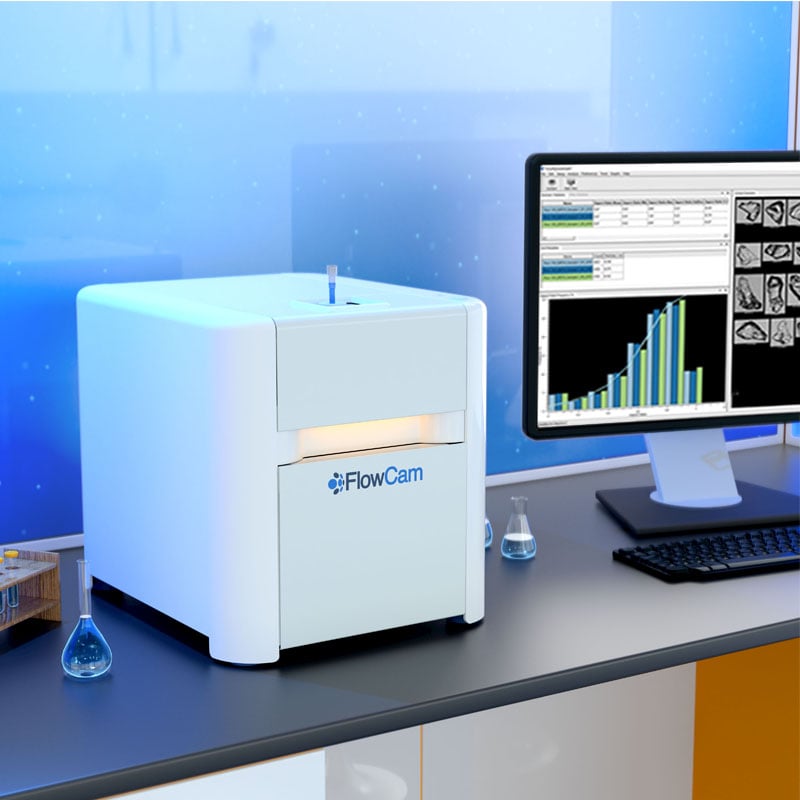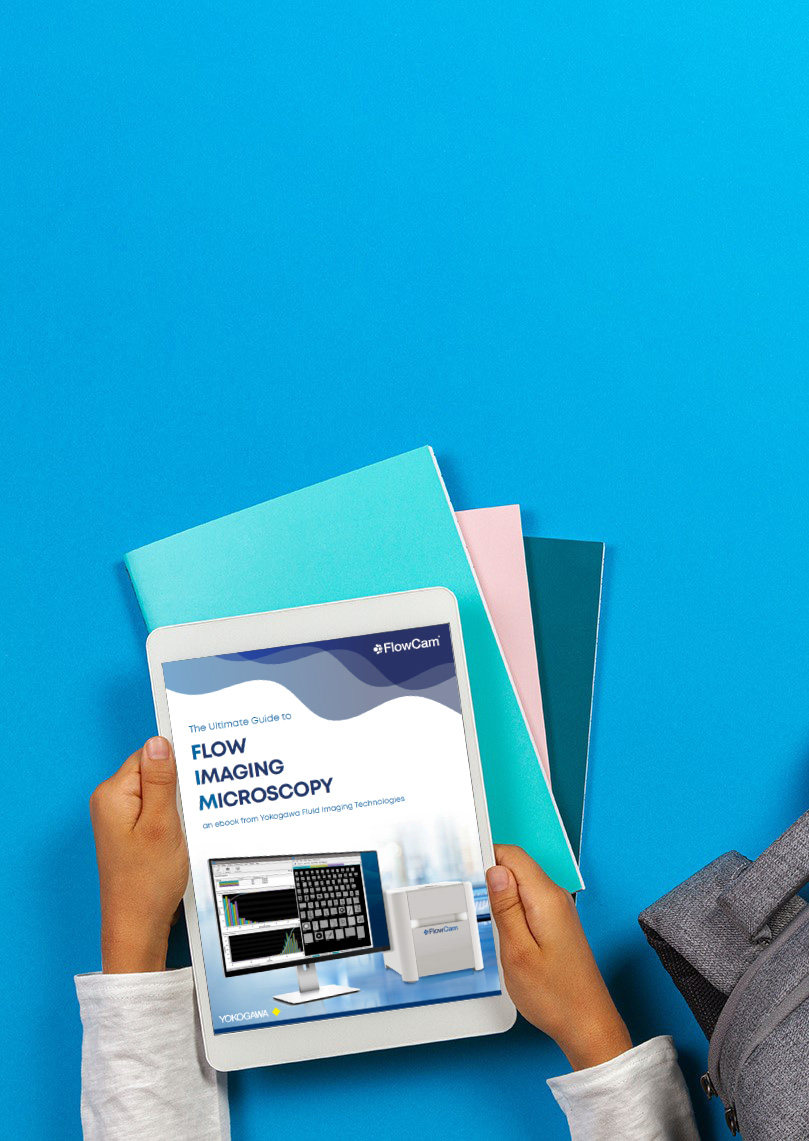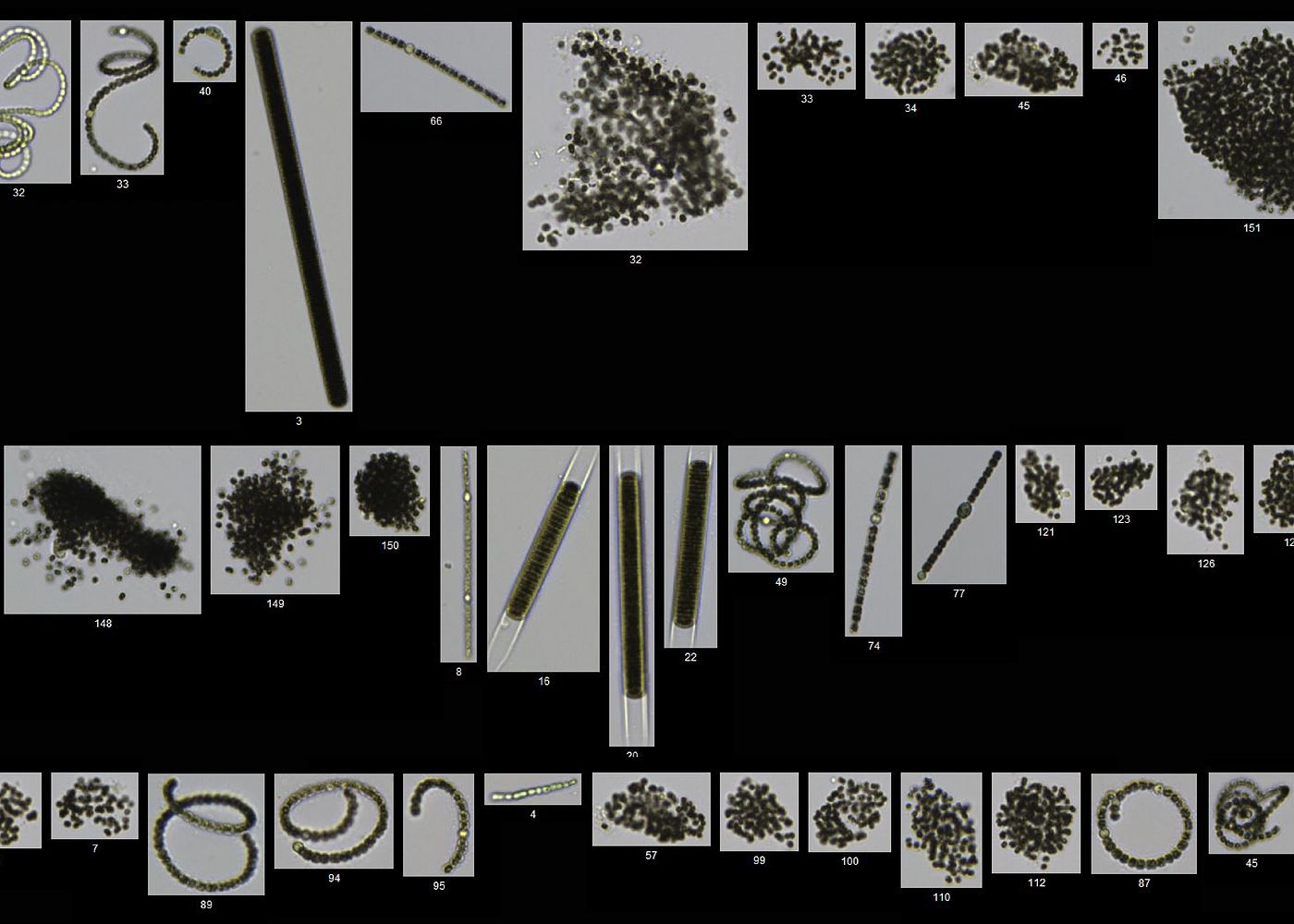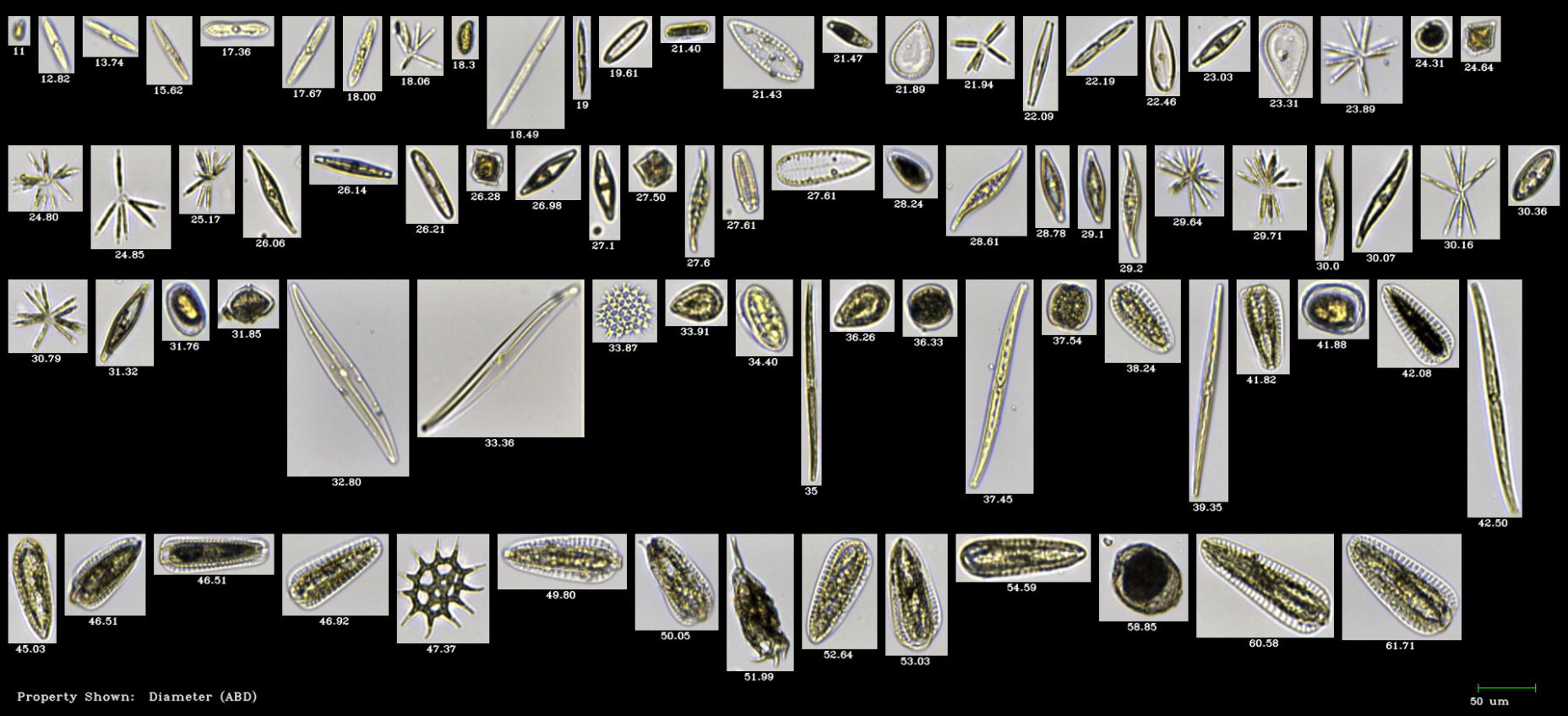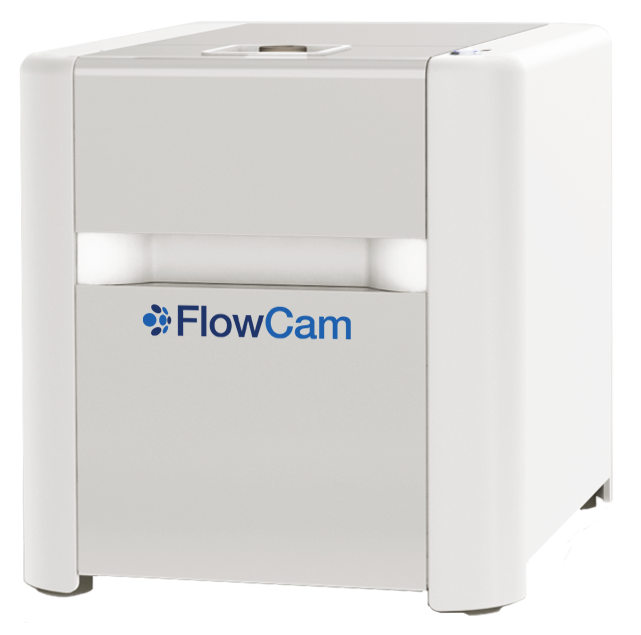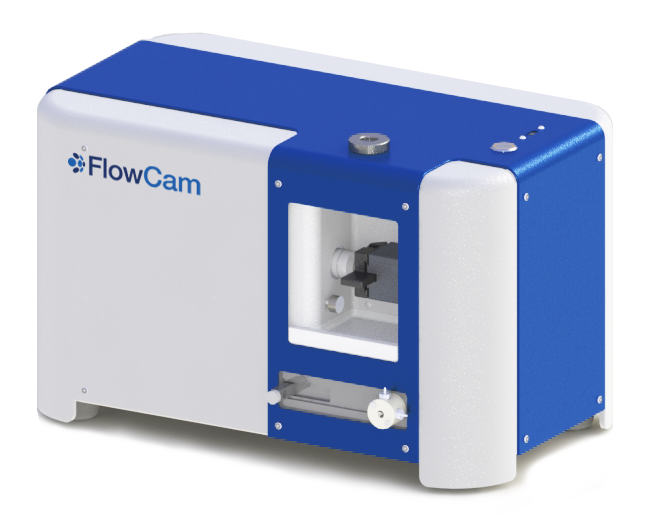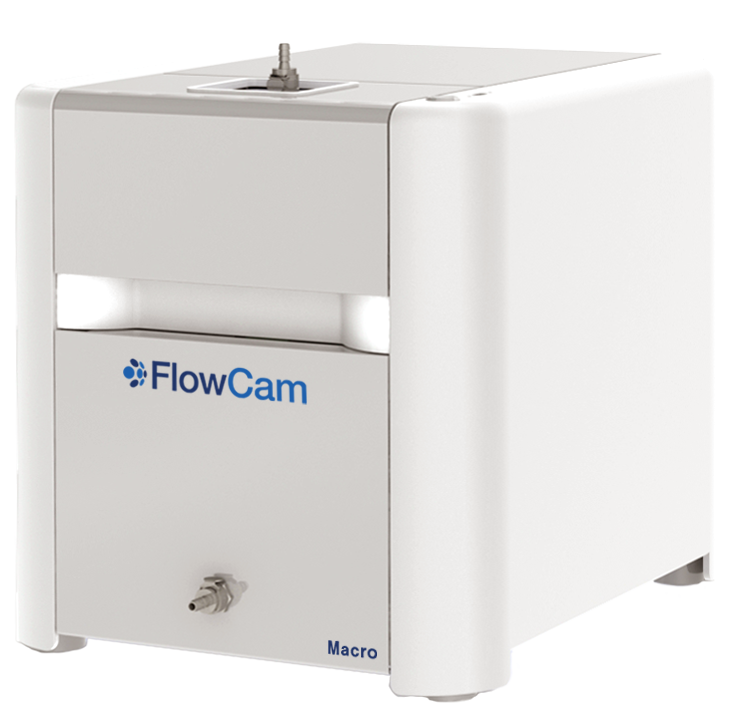Overview
FlowCam Water Quality Analyzer
FlowCam Cyano uses fluorescence-based flow imaging microscopy to detect and analyze phytoplankton in aquatic samples. Similar to a flow cytometer, it uses laser excitation to trigger fluorescence in cyanobacteria and other photosynthetic organisms. High-resolution images of the fluorescing particles are captured and classified, allowing users to distinguish cyanobacteria from algae, detritus, and other particles based on size, shape, and fluorescence profile.
FlowCam Cyano streamlines aquatic research and supports faster, more informed water treatment decisions by automating phytoplankton detection and characterization.
Benefits
Why use an image-based water quality analyzer?
FlowCam Cyano uses flow imaging microscopy combined with fluorescence detection to deliver faster, more detailed analysis of phytoplankton than microscopy or flow cytometry alone. This approach enables efficient identification and quantification of harmful cyanobacteria and other particles in source water.
- Identify and enumerate cyanobacteria in freshwater and marine environments using fluorescence detection.
- Obtain meaningful results in less than a minute.
- Distinguish organisms by size, shape, and color.
- Calculate algae cell counts, concentration, and biovolume.
- Save time and money on source water testing and eliminate customer complaints.
- Automatically identify organisms by creating libraries in VisualSpreadsheet® software.
Specifications
FlowCam Cyano
| Specification |
FlowCam Cyano |
| Application |
Aquatic |
| Size Range |
2 µm to 1 mm |
| Magnification |
20X, 10X, 4X, and 2X |
| Focus System |
Automatic |
| Minimum Sample Volume |
100 µL |
| Flow Rate |
0.05 mL/min to 10 mL/min |
| High-Resolution Camera Type |
Color |
| Fluorescence excitation |
2 fluorescence channels to differentiate Cyanobacteria from other algae: 633 nm laser (Chlorophyll - Ch1: 700 nm ± 10 nm, Phycocyanin - Ch2: 650 nm ± 10 nm) |
| Compatible with ALH for FlowCam automated liquid handling? |
Yes |
| Compatible with EcoTaxa collaborative plankton research platform? |
Yes |
FAQs About Imaging Water Quality Analyzers
What is an image-based water quality analyzer?
An image-based water quality analyzer is an analytical instrument used to examine water samples for phytoplankton and other particles. Water quality instruments enable scientists to count and characterize potential threats in a wide range of sample types, supporting applications like source water safety monitoring, harmful algal bloom detection, plankton research, and aquaculture management.
What applications can benefit from imaging water quality analyzers?
Water quality analyzers serve numerous critical applications:
- Municipal drinking water monitoring: Early detection of cyanobacteria, taste and odor producers, filter clogging algae, and potentially toxigenic organisms in reservoirs and treatment systems
- Recreational water safety: Monitoring of lakes, beaches, and swimming areas for harmful algal blooms
- Aquaculture: Ensuring optimal water conditions for fish and shellfish production
- Environmental research: Studying plankton communities and ecosystem dynamics
- Harmful Algal Bloom (HAB) monitoring: Early detection and tracking of potentially toxic bloom events
- Wastewater treatment: Monitoring biological components in treatment processes
- Industrial water systems: Ensuring water quality for manufacturing processes
-
- What techniques are used for phytoplankton analysis?
Several image-based methods are available for analyzing phytoplankton in source water, depending on the information required and the desired level of automation. Common techniques include:
- Manual microscopy: A brightfield or fluorescence microscope, often combined with a digital camera, is used to capture static images of phytoplankton in a sample. These images are then manually inspected to analyze morphology, size, and other features. While it provides detailed visual information, it can be time- and labor-intensive.
- Flow cytometry: Phytoplankton in a sample are arranged into a single-file flow, pass through a laser, and generate light signals that help determine organism count, size, and fluorescence data. This method is faster than manual microscopy but doesn’t typically offer imaging.
- Flow imaging microscopy: A technique that integrates microscopy with continuous flow analysis. Instruments like the FlowCam Cyano capture high-resolution images of phytoplankton in real time, enabling rapid identification and classification based on size, shape, fluorescence, and other visual characteristics. This approach balances the speed of flow cytometry with the detailed imaging of microscopy for effective, accurate analysis.
How can fluorescence detection improve phytoplankton analysis?
Fluorescence detection enhances phytoplankton analysis by enabling the identification of photosynthetic organisms, like cyanobacteria. When excited by specific wavelengths of light, cyanobacteria emit characteristic fluorescence signals. This allows analyzers to differentiate potentially harmful cyanobacteria from other algae and particles, providing early detection for harmful algal blooms and helping water management professionals take preventive action.
Why image-based water quality and phytoplankton analysis?
Image-based techniques provide comprehensive insights into water quality that other methods cannot match. High-resolution images capture the morphological details of phytoplankton, allowing for accurate taxonomic identification and classification of cyanobacteria, algae, and other aquatic organisms. Visual data combined with quantitative measurements offer a complete picture of water quality, enabling analysts to distinguish between harmless and potentially toxic species that may appear similar in size or fluorescence profile but differ in morphology. These visual records also serve as valuable documentation for regulatory compliance and historical comparison.
How do I choose the right imaging water quality analyzer for my application?
Selecting the correct type of water quality analyzer depends on your specific monitoring needs. Consider these factors when making your decision:
- Target organisms: Choose an analyzer with fluorescence detection capabilities for cyanobacteria and algae monitoring.
- Size range: Ensure the instrument's detection range matches the size of organisms you need to identify (typically 2-200 μm for most algae and cyanobacteria).
- Sample throughput: Consider the number of samples you'll analyze daily and select an instrument with an appropriate processing speed.
- Automation needs: For routine monitoring, instruments with automated sampling and analysis features save time and reduce labor costs.
- Data integration: Look for systems that provide comprehensive analysis software and can integrate with your existing monitoring programs.
- Application context: Whether for source water compliance, research, or HAB monitoring, select a system optimized for your specific application.
The ideal image-based water quality analyzer should reliably identify and enumerate phytoplankton relevant to your water quality concerns while delivering actionable data that supports timely decision-making.



